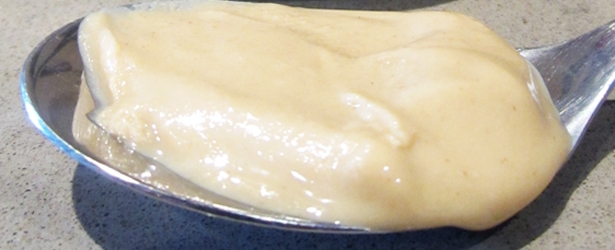The next topic for my What’s That? series is Tahini. I always keep a jar of tahini on hand, as I use it weekly to make hummus and salad dressings. Once you buy tahini, you’ll never have to (over) pay for store-bought hummus ever again. Also, one of my upcoming recipes will feature tahini, so I thought that I’d offer a bit of background on it now for those of you who may be unfamiliar with it.

Facts
- It is a paste made of ground sesame seeds, and has a nutty and slightly bitter taste
- If the sesame seed husks are removed, it is referred to as “hulled”, otherwise as unhulled
- Some tahini contains lightly roasted sesame seeds, other types use raw sesame seeds
- It originated in ancient Persia (Iran), and has been around since at least the 13th century
- It is used in Middle Eastern foods, as well as Chinese, Korean and Japanese dishes
- It is sold fresh or dehydrated – normally in a glass or plastic jar, and is available at most grocery stores in the Middle Eastern or Kosher sections
- Like any natural nut or seed butter, the natural oils may separate after a certain period of time – simply use a spoon to mix it back together before using
Source: Wikipedia
Uses
- It is the main ingredient in many Middle Eastern recipes including:
- Hummus – along with chickpeas, lemon juice, and olive oil (the more tahini, the creamier the hummus)
- Baba ganoush – roasted eggplant dip
- If you’ve ever eaten a falafel or shawarma wrap, then it may have been served with a thin white sauce of watered-down tahini
- It is the main ingredient in halva, a sweet dessert made with tahini and sugar
- It tastes great in salad dressings and makes them thicker/creamier
- Add a tablespoon to smoothies for an extra protein boost
- My jar says to store it in the pantry, but I’ve always stored it in the fridge
- Here’s a list of my tahini recipes
Q: What are your favorite uses for Tahini?
